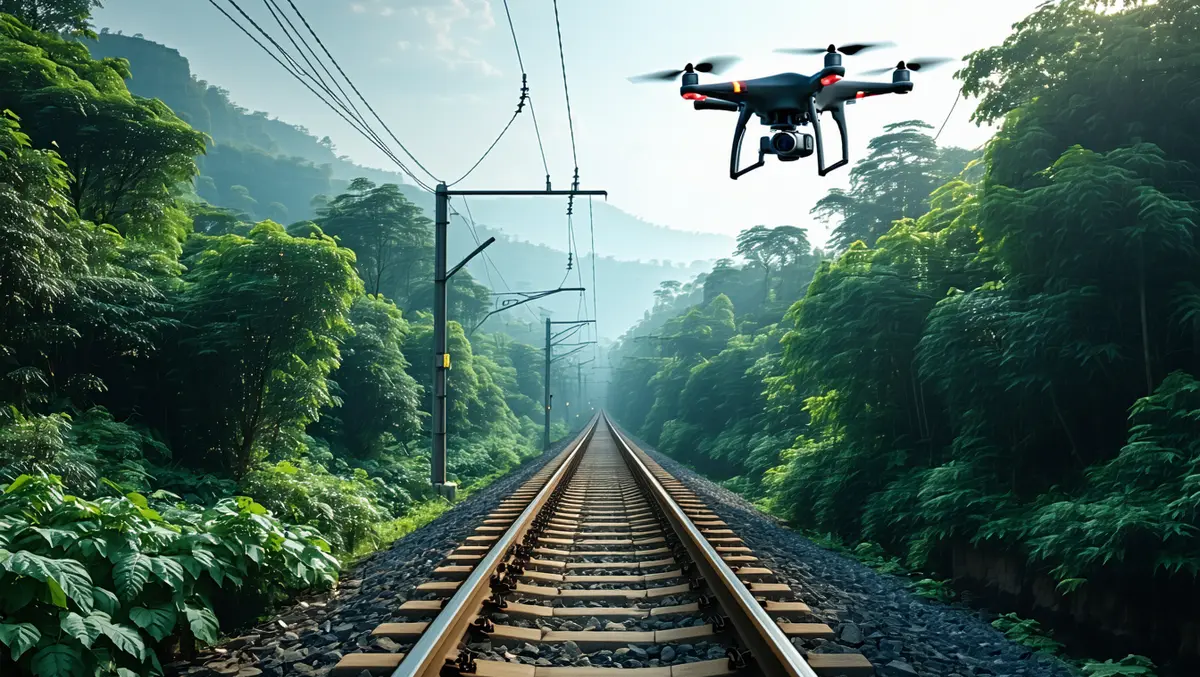
Network Rail trials drones to prevent trespassing incidents
Network Rail has embarked on a project to develop a 'drone assured navigation and safety system' with the collaboration of Drone Major Limited, aimed at improving the management of the UK's railway network.
The new system has been trialled along the Wolverhampton and Severn Valley Railway lines, demonstrating its potential to enhance the safety and efficiency of the railway service. It promises to deliver significant annual financial savings.
Drone Major Limited, which has obtained approval from the Civil Aviation Authority (CAA) for flying small drones along the railway, is collaborating with Network Rail. This initiative could revolutionise the management of trespass incidents on UK railways. Drones operated beyond the visual line of sight (BVLOS) are expected to speed up the verification and interception of trespassers, thereby reducing train downtime and potentially saving lives.
Drones fly within a defined 'safety corridor', akin to aviation standards, using a sophisticated 'Digital TetheringTM' system to ensure the safe flight of the aircraft, thereby reducing ground-level risk. Trials began in Wolverhampton and extended to the Severn Valley Railway, demonstrating the drones' ability to monitor railways, transmitting real-time visual data to operators for effective trespasser detection and monitoring.
This Digital TetheringTM employs a navigation solution that includes artificial perception and precise ground-based beacons, enhancing autonomous navigation, especially in areas lacking stable GPS/GNSS signals. Designed to improve safety and efficiency, it supports unmanned aerial system operations during railway monitoring and inspection tasks.
The UK rail network witnessed over 18,500 trespassing incidents last year, equating to almost one incident per mile of railway track. Trespass contributes significantly to delays, with annual performance delay costs estimated at GBP £55 million pre-COVID-19.
Current methods for monitoring and resolving trespassing and vandalism are not only slow but pose risks to Network Rail staff. Rail workers face a safety risk of being hit by trains whilst working trackside, an occurrence every 18 to 24 months on average.
The system, thoroughly tested, aims to improve railway efficiency and safety for passengers and staff, and reduce trespassing incidents. It also lays the groundwork for a comprehensive drone network for monitoring and maintaining the entire Network Rail estate, promising further savings and reducing the GBP £1.9 billion spent annually on monitoring infrastructure issues across the railway network.
Dominic Mottram, Programme Manager for National Drone Strategy at Network Rail, stated: "The potential for these projects to deliver a more reliable, safer railway for our passengers and colleagues is huge and could even be a game-changer. We operate one of the safest railways in the world, but it is also one of the busiest, so keeping trains running reliably while monitoring tracks and dealing with incidents can be a challenge and delays can spread quickly and far from the original source. Information provided by drones will mean our colleagues' expertise in maintaining the railway can be focussed where it is needed, without exposing them to the risk of the 'live railway', and instances of trespass can be tackled much more quickly."
Robert Garbett, Founder and Chief Executive of Drone Major Limited, remarked: "Drones represent enormous opportunities across a huge number of industries. Network Rail's initiative as a 'first mover' in trailing our Digital TetheringTM concept sets an example worldwide. In the UK, it presents an opportunity to fully modernise our rail infrastructure; deliver a faster, safer, more effective and efficient service for customers; and ultimately drive economic growth for the whole of the UK."


